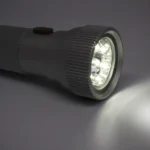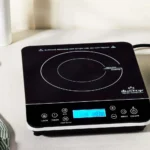
In an age dominated by instant messaging and digital communication, it’s easy to overlook the humble fax machine—a device that once revolutionized the way we share information. Despite the rise of email and cloud sharing, fax machines still hold a unique place in the world of communication. In this blog post, we’ll explore 25 fascinating facts about fax machines, from their surprising history to their enduring relevance in certain industries. Whether you’re a tech enthusiast or just curious about this retro gadget, join us as we delve into the intriguing world of fax machines and uncover the trivia that makes them a noteworthy topic of discussion.
Invention Year: The concept of the fax machine dates back to 1843 when Alexander Bain, a Scottish philosopher, patented a device that could transmit images over wires. Bain’s invention utilized a method of transmitting inked images by rotating a cylinder, but it was primarily theoretical and lacked practical application. The technology was not refined enough for widespread use at the time, and it took several decades before fax machines became commercially viable.
Commercial Launch: Giovanni Caselli, an Italian inventor, took Bain’s ideas and made significant advancements, culminating in the creation of the “pantelegraph” in 1865. This device was the first commercially successful fax machine, allowing for the transmission of handwritten messages and drawings over telegraph wires. The pantelegraph was capable of sending images over long distances, paving the way for future fax technology and demonstrating the potential for remote communication.
Fax Speed: Early fax machines were quite slow, with transmission speeds of around 1 page per minute. This made them impractical for many business applications where quick communication was essential. However, advancements in technology have drastically improved fax speeds. Modern fax machines can transmit a full page in just a few seconds, thanks to enhanced modulation techniques and digital transmission methods, making them more efficient for business operations.
Resolution: The resolution of early fax machines was relatively low, typically around 100 dots per inch (dpi), resulting in images and text that lacked clarity. As technology progressed, modern fax machines now offer resolutions of up to 400 dpi or higher. This improvement allows for clearer and more detailed transmissions, making it possible to send high-quality documents, including images and intricate graphics, which is particularly beneficial in fields like healthcare and legal documentation.
Transmission Technology: Traditionally, fax machines operated using analog telephone lines, which transmitted data in a continuous wave format. This method had limitations in terms of speed and quality. However, with the advent of digital technology, many modern fax machines can now transmit faxes over the internet using protocols like VoIP (Voice over Internet Protocol). This digital faxing not only enhances speed but also reduces the costs associated with traditional phone lines.
Global Usage: By the late 20th century, the fax machine had become a staple in offices around the world, with estimates suggesting there were over 40 million fax machines in use globally. Their popularity stemmed from their ability to send documents quickly and securely, making them essential in professional environments. Despite the rise of digital communication methods, fax machines have maintained a presence, particularly in industries that require secure document transmission.
Fax Paper: Traditional fax machines typically use thermal paper, which is coated with a heat-sensitive material that turns black when exposed to heat. While thermal paper was popular due to its low cost and ease of use, it has drawbacks, such as fading over time and being sensitive to light and heat. This has led to the development of alternative printing methods, such as inkjet and laser printing, which offer greater durability and longevity for faxed documents.
First Fax Sent: The first successful transmission of a fax over a telephone line occurred in 1865, marking a significant milestone in communication technology. This achievement demonstrated the feasibility of sending images and documents over long distances, laying the groundwork for future innovations in fax technology. The ability to transmit written communication in real-time changed how businesses operated and communicated, setting the stage for the modern office environment.
Longest Fax: The longest fax ever sent was a remarkable feat accomplished in 1992, when a 1,000-page document was transmitted from a law office in California to a client in New York. This event highlighted the capabilities of fax machines to handle large documents and underscored their importance in legal and business contexts where lengthy contracts and reports are common. The successful transmission of such a lengthy document showcased the reliability and efficiency of fax technology at the time.
Fax Machine Size: Early fax machines were bulky and often the size of a small desk, making them difficult to fit into standard office spaces. Their large size was due to the mechanical components required for operation and the need for a dedicated telephone line. In contrast, modern fax machines have become significantly more compact, with some models designed to fit seamlessly on a desktop alongside printers and scanners. This miniaturization has made fax machines more accessible and user-friendly in contemporary office environments.
Fax Machine Weight: Early fax machines were quite heavy, often exceeding 100 pounds due to their large mechanical components and the technology used at the time. This weight made them cumbersome and difficult to move. In contrast, modern fax machines are designed to be lightweight and portable, with many models weighing as little as 10 pounds. This reduction in weight is attributed to advancements in technology, such as the use of lightweight materials and more compact internal components, making them easier to integrate into office spaces.
Fax Machine Market: The global fax machine market was valued at approximately $2.5 billion in 2019, reflecting the ongoing demand for fax technology, particularly in sectors where secure document transmission is essential. Despite the rise of digital communication, fax machines continue to be utilized in industries like healthcare, legal, and finance, where confidentiality and compliance with regulations are critical. The market’s resilience highlights the fax machine’s enduring relevance in the modern business landscape.
First Digital Fax: The first digital fax machine was introduced in the early 1980s, marking a significant technological shift from analog to digital transmission. Digital fax machines improved speed, clarity, and reliability, allowing for faster document transmission and better image quality. This advancement paved the way for the integration of fax technology with computers and networks, enabling features like scanning and emailing documents directly from the fax machine, further enhancing workplace efficiency.
Fax Transmission Time: A standard black-and-white fax typically takes about 30 seconds to transmit one page, depending on the machine’s speed and the quality of the telephone line. This efficiency makes faxing a practical choice for businesses that need to send documents quickly. The ability to transmit important information in a matter of seconds has made fax machines a valuable tool in time-sensitive industries, allowing for rapid decision-making and communication.
Fax in Business: Despite the prevalence of email and other digital communication methods, fax machines remain widely used in various industries, including healthcare, legal, and finance. These sectors often rely on faxing for secure document transmission, as faxes are considered more secure than email due to the lower risk of interception. Additionally, many regulations require certain documents to be transmitted via fax, further solidifying their importance in business operations.
Fax Number Format: Fax numbers generally follow the same format as telephone numbers, including country and area codes. This consistency allows users to easily identify and dial fax numbers, facilitating communication across different regions and countries. The familiarity of the fax number format has contributed to the ease of use of fax machines, ensuring that businesses can send and receive documents without confusion.
Fax Machine Lifespan: The average lifespan of a fax machine is around 5 to 7 years, depending on usage, maintenance, and the quality of the machine. Regular maintenance, such as cleaning and replacing ink or toner, can extend the lifespan of a fax machine. As technology continues to evolve, many businesses are opting for multifunction devices that combine faxing with printing and scanning, which can offer greater longevity and functionality.
Fax Machine Features: Many modern fax machines come equipped with multifunction capabilities, allowing them to scan, print, and copy in addition to faxing. These features make them versatile tools for office environments, enabling users to handle various document-related tasks from a single device. The integration of digital technology has also led to features like automatic document feeders and duplex printing, enhancing productivity and efficiency.
First Wireless Fax: The first wireless fax machine was introduced in the late 1990s, allowing users to send faxes without the need for a physical phone line. This innovation utilized wireless technology, such as radio frequency and later Wi-Fi, to transmit documents. Wireless faxing provided greater flexibility and convenience, enabling users to send faxes from various locations without being tethered to a landline, catering to the increasing mobility of the workforce.
Legal Acceptance: In many countries, faxed signatures are considered legally binding, making fax machines important tools for contract signing and other legal documents. This acceptance stems from the ability to transmit signed documents quickly and securely, allowing for efficient business transactions. The legal validity of faxed documents has contributed to the continued use of fax machines in industries where formal agreements and contracts are essential.
Fax Machine Maintenance: Regular maintenance is crucial for ensuring optimal performance and longevity of fax machines. This includes cleaning the internal components, such as the scanner and rollers, to prevent paper jams and ensure clear transmissions. Additionally, users should regularly replace consumables like ink or toner and thermal paper as needed. Proper maintenance not only enhances the machine’s efficiency but also reduces the likelihood of breakdowns, allowing businesses to maintain consistent communication.
Environmental Impact: The production and disposal of fax machines can contribute to electronic waste (e-waste), which poses environmental challenges. Many fax machines contain materials that are not biodegradable, and improper disposal can lead to pollution. As a result, some businesses are exploring eco-friendly alternatives, such as digital fax solutions that eliminate the need for physical machines and paper. These alternatives can reduce waste and promote more sustainable practices in document handling.
Fax Software: Digital faxing solutions, such as online fax services, allow users to send and receive faxes via email or web applications without the need for a physical fax machine. These services utilize cloud technology to facilitate fax transmission, making it easier for users to manage documents from any location with internet access. This shift to digital faxing not only streamlines workflows but also reduces reliance on paper and traditional fax machines, aligning with modern business practices.
Fax in Emergencies: Fax machines have been utilized in emergency situations for rapid communication when other forms of communication are unavailable. For instance, during natural disasters or power outages, fax machines can still operate over telephone lines, allowing essential information to be transmitted quickly. This reliability has made fax machines a valuable tool for organizations that need to maintain communication during critical situations, ensuring that important updates and instructions can be shared promptly.
Decline in Use: The use of fax machines has declined significantly with the rise of digital communication methods, such as email and instant messaging. However, they still hold a niche in certain industries where secure document transmission is necessary. Factors contributing to the decline include the convenience of digital alternatives and the growing preference for paperless solutions. Despite this decline, fax machines remain relevant in sectors that require compliance with regulations or the secure handling of sensitive information.
Frequently Asked Questions about Fax Machines:
1. What is a fax machine and how does it work?
A fax machine is a device that transmits scanned documents over a telephone line to another fax machine. The process involves scanning a document, converting it into a digital signal, and sending it through the phone line. The receiving fax machine then decodes the signal and prints the document. This allows for quick transmission of physical documents without the need for physical delivery.
2. Are fax machines still used today?
Yes, fax machines are still used today, particularly in industries that require secure document transmission, such as healthcare, legal, and financial services. They are valued for their ability to send documents securely and for compliance with regulations that require written signatures.
3. What are the advantages of using a fax machine?
- Security: Fax machines can provide a secure method of sending sensitive documents, as they are less susceptible to hacking compared to email.
- Legal Validity: Faxes are often considered legally binding in many jurisdictions, especially for contracts and agreements.
- Simplicity: Fax machines are straightforward to use and do not require internet access, making them accessible in various settings.
4. What are the disadvantages of fax machines?
- Cost: Fax machines can be expensive to purchase and maintain, and there are ongoing costs for phone lines and paper.
- Speed: Faxing is generally slower than sending emails or using digital file sharing methods.
- Limited Functionality: Fax machines are primarily designed for document transmission and lack the versatility of modern digital communication tools.
5. Can I send a fax without a fax machine?
Yes, you can send a fax without a traditional fax machine by using online fax services. These services allow you to send and receive faxes via email or a web interface, eliminating the need for physical hardware. Simply upload your document, enter the recipient’s fax number, and the service takes care of the rest.
6. How do I receive a fax?
To receive a fax, you need a fax machine or an online fax service. If you have a fax machine, simply ensure it is connected to a phone line. For online services, you will be assigned a dedicated fax number, and incoming faxes will be converted into digital files that you can access via email or a web portal.
7. What types of documents can be sent via fax?
Most types of documents can be sent via fax, including contracts, invoices, legal documents, and forms. However, it’s important to ensure that the quality of the document is good enough for scanning to avoid any loss of information.
8. What is the difference between a plain paper fax machine and a thermal fax machine?
A plain paper fax machine uses standard paper and is more common today, while thermal fax machines use heat-sensitive paper that can be more expensive and less durable. Plain paper faxes typically offer better print quality and longevity compared to thermal prints, which can fade over time.
9. How can I troubleshoot common fax machine issues?
Common issues include paper jams, connection problems, and poor-quality transmissions. Here are some troubleshooting tips:
- Paper Jams: Check for any stuck paper and ensure the paper is loaded correctly.
- Connection Issues: Verify that the fax machine is properly connected to the phone line and check for any service outages.
- Poor Quality: Ensure the scanner glass is clean and the document is placed correctly.
10. What are some eco-friendly alternatives to traditional fax machines?
Consider using online fax services that reduce the need for paper and physical hardware. These services often provide digital storage options, allowing you to keep documents in a more sustainable manner. Additionally, using email and cloud-based collaboration tools can further minimize paper usage.









